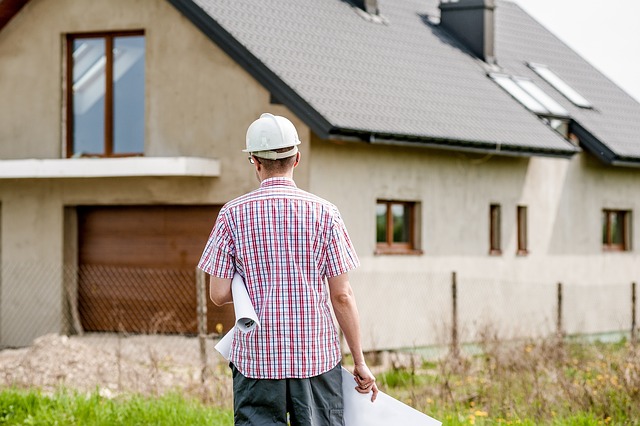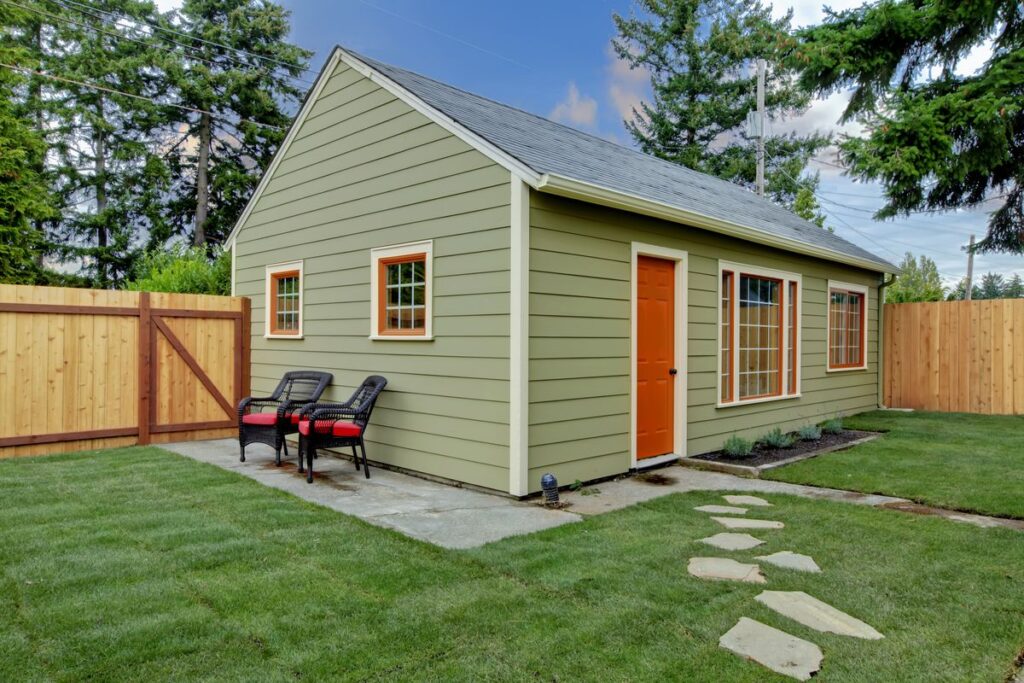Looking to make the best choice for modern living? New construction might be your answer. With 10 compelling reasons, this blog post explores why new homes outshine old ones in contemporary living. From advanced technology integration and energy efficiency to customizable options and modern amenities, new constructions offer a plethora of benefits that cater to today’s lifestyle needs. Whether it’s the assurance of up-to-date safety features or the freedom from renovation hassles, new builds provide a fresh start with minimal maintenance worries. Stay tuned as we delve into how new construction homes in a community can elevate your living experience.
1. Customization for Contemporary Lifestyles
Personalized Design Features
New homes in the community offer customizable floor plans to suit modern living needs. Homebuyers can select personalized design features and finishes in new construction. For example, if a family loves cooking and entertaining, they might opt for a large, open kitchen with an island and high-end appliances.
Contemporary new build home designs cater to the demand for open-concept layouts. This means that spaces flow seamlessly into one another, creating an airy and spacious feel. Families who enjoy hosting gatherings or simply want to keep an eye on their children while preparing meals find this new construction home layout particularly appealing.
Tailored Spaces for Specific Needs
In addition to open-concept layouts, new construction homes often feature flexible spaces that can be tailored to specific needs. These areas are designed with versatility in mind, allowing homeowners to adapt them as their lifestyle changes over time.
For instance, a room initially designated as a study could later become a playroom or hobby space without requiring major renovations. This flexibility is especially advantageous for families with young children or individuals who work from home and need dedicated office space.
2. Advanced Building Materials and Techniques
Enhanced Durability
New construction outshines old homes for modern living due to the utilization of advanced building materials. These materials are specifically designed to withstand wear and tear, ensuring that the home remains in top condition for longer periods. For instance, new builds often incorporate reinforced concrete, which is significantly stronger than traditional concrete. This means that new homes have a better chance of standing strong against natural disasters like earthquakes or hurricanes.
Moreover, advanced building materials also contribute to improved durability by being more resistant to mold, pests, and decay. For example, engineered wood products used in new construction are less susceptible to rotting compared to traditional lumber. This ensures that homeowners can enjoy a healthier living environment without worrying about structural issues caused by deterioration over time.
Higher Structural Integrity
In addition to enhanced durability through advanced building materials, new construction offers higher structural integrity due to modern techniques employed during the building process. The use of cutting-edge methods such as precast concrete panels and steel framing enhances the overall strength of the home’s structure. As a result, new homes are better equipped to handle heavy loads and external pressures compared to older properties built with conventional methods.
These advancements in construction techniques not only ensure superior stability but also provide added safety benefits for residents. For instance, newer homes are constructed with features like impact-resistant windows and doors that offer increased protection against extreme weather conditions or potential intruders.
Energy-Efficient Integration
Another compelling reason why new construction beats old homes for modern living is the integration of energy-efficient materials into the building process. From insulation technologies to high-performance windows and doors, these energy-efficient components help reduce utility costs while promoting eco-friendly living practices.
For example:
- New builds may incorporate solar panels on roofs or utilize geothermal heating systems.
- High-efficiency HVAC systems installed in new constructions optimize energy usage without compromising comfort.
- Advanced insulation materials such as spray foam insulation contribute significantly towards maintaining consistent indoor temperatures while minimizing energy loss.
By embracing these innovative solutions for energy conservation within their design and build processes, newly constructed homes offer homeowners substantial savings on utility bills while reducing their environmental footprint.
3. Energy Efficiency and Sustainability
Lower Energy Consumption
New homes are designed with energy-efficient appliances and systems, which contribute to lower energy consumption. For example, modern heating and cooling systems in new constructions are more efficient, using less energy to maintain a comfortable indoor temperature. This results in reduced utility bills for homeowners.
Sustainable Building Practices In addition to energy-efficient appliances, sustainable building practices play a crucial role in reducing the environmental impact of new construction. Builders now use materials that have been sustainably sourced or recycled, such as bamboo flooring or reclaimed wood beams. These sustainable choices not only benefit the environment but also provide healthier living spaces for occupants.
Cost Savings for Homeowners
The combination of energy-efficient appliances and sustainable building practices leads to significant cost savings for homeowners in new builds. With lower energy consumption comes reduced utility costs over time. Many new homes come equipped with smart technologies that allow homeowners to monitor and control their energy usage more effectively.
Pros:
- Reduced utility bills due to lower energy consumption.
- Healthier living spaces from the use of sustainable materials.
Cons:
- Initial higher cost of purchasing an energy-efficient home compared to an older one.
4. Smart Home Technology Integration
Convenience and Security
New construction beats old homes for modern living due to the integration of smart home technology. Imagine being able to control your lights, thermostat, and security system from your smartphone or tablet. This level of convenience is standard in new homes, making everyday tasks easier and more efficient. For example, with integrated smart home technology, homeowners can remotely adjust the temperature before arriving home or receive alerts about potential security breaches.
Smart thermostats are another key feature that comes with new construction. These devices not only provide greater comfort by maintaining a consistent temperature but also contribute to energy efficiency. By automatically adjusting the temperature based on occupancy and outdoor conditions, they help reduce energy consumption while ensuring optimal comfort levels for occupants.
Energy Management
In addition to enhancing convenience and security, smart home technology in new construction significantly improves energy management. With features such as automated lighting systems that can be programmed according to daily routines or controlled remotely via a mobile app, homeowners can minimize unnecessary electricity usage without sacrificing comfort or convenience. For instance, these systems allow users to schedule lights to turn off when no one is in a room or dim them during specific times of day.
Moreover, integrating smart home technology into new construction promotes sustainability by reducing overall energy consumption through efficient management practices. This aligns with the preceding section’s discussion on “Energy Efficiency and Sustainability,” highlighting how modern homes leverage advanced technologies for environmental responsibility while providing unparalleled convenience for residents.
5. Lower Maintenance and Repair Costs
Minimal Maintenance
New construction offers several advantages over older homes, especially. One of the key reasons why new homes are preferred for modern living is that they require minimal maintenance. Unlike older properties, new builds come with fresh materials and fixtures, which means there’s less wear and tear to contend with over the years. This translates to fewer repairs needed, saving homeowners both time and money in the long run.
The use of quality materials in new construction plays a significant role in reducing maintenance requirements. These high-quality materials are designed to withstand the test of time, minimizing the need for frequent repairs or replacements. For example, durable flooring options like engineered hardwood or ceramic tiles can last for many years without showing signs of wear and tear. This not only adds value to the home but also reduces ongoing maintenance costs significantly.
Up-to-Date Systems
Another compelling reason why new construction beats old homes for modern living is the presence of up-to-date plumbing and electrical systems. New builds come equipped with state-of-the-art plumbing fixtures and wiring, ensuring that homeowners won’t have to deal with outdated or faulty systems that often plague older properties. With these modern systems in place, homeowners can enjoy peace of mind knowing that they are less likely to encounter costly issues related to plumbing leaks or electrical malfunctions.
Moreover, newer homes often incorporate smart home technology integration seamlessly into their design. From energy-efficient appliances to automated climate control systems, these features not only enhance convenience but also contribute to lower maintenance costs by optimizing energy usage and reducing utility expenses over time.
6. Modern Safety Standards and Regulations
Stringent Building Codes
New homes adhere to the latest safety standards for optimal occupant protection. Stringent building codes ensure high safety levels in newly constructed homes. These codes cover various aspects, such as structural integrity, fire resistance, and electrical systems.
For example, new homes are built with advanced materials that have been tested and approved to withstand fire hazards. This significantly reduces the risk of fire-related accidents and provides a safer living environment for occupants. Modern construction techniques focus on earthquake-resistant designs to mitigate potential damage during seismic events.
Furthermore, these building codes also address accessibility features for individuals with disabilities or limited mobility. This ensures that new homes are designed to accommodate a diverse range of occupants while maintaining safety and ease of movement throughout the property.
Advanced Security Systems
In addition to meeting structural safety requirements, newly constructed homes integrate advanced security systems to enhance overall safety measures. These may include smart locks, surveillance cameras, motion sensors, and alarm systems that provide comprehensive security coverage for the property.
For instance, smart locks equipped with biometric authentication or digital passcodes offer enhanced protection against unauthorized access compared to traditional lock-and-key mechanisms used in older homes. Surveillance cameras allow homeowners to monitor their property remotely through connected devices like smartphones or tablets.
Moreover, motion sensors can detect unusual activity within the premises and trigger immediate alerts for prompt action. Alarm systems integrated with smoke detectors further bolster home safety by providing early warnings in case of fire emergencies.
7. Warranty and Builder Guarantees
Structural Defects
New construction provides a warranty that covers structural defects. This means that if there are any issues with the foundation, load-bearing walls, or roof within a certain period after purchase, the builder will be responsible for repairing them. For example, if there’s a crack in the foundation or problems with the roof structure, the warranty ensures that these issues will be addressed without additional cost to the homeowner.
Major Systems
In addition to structural coverage, new home warranties also extend to major systems such as plumbing, electrical wiring, and HVAC (heating, ventilation, and air conditioning). This means that if there are any faults in these critical systems within the warranty period, homeowners won’t have to worry about expensive repair bills. For instance, if there’s an issue with the electrical wiring or a leak in the plumbing system shortly after moving in, it would be covered under the new home warranty.
Peace of Mind
Builder guarantees offer peace of mind by assuring homeowners about the quality of construction. Knowing that their home is backed by a builder guarantee can alleviate concerns about potential issues arising from poor workmanship or materials used during construction. The guarantee serves as a promise from the builder regarding their confidence in delivering high-quality homes built to modern safety standards and regulations mentioned earlier.
8. Community Amenities in New Developments
Range of Amenities
New construction homes offer a range of amenities that make them stand out for modern living. These include parks, fitness centers, and community pools. Imagine having access to a well-equipped gym or a refreshing pool just steps away from your front door.
Planned communities are designed to provide residents with convenient access to various recreational facilities. This means that you can enjoy leisure activities without having to travel far from home. Whether it’s taking a relaxing stroll through beautifully landscaped green spaces or participating in community events at the local park, new developments prioritize creating an enriching lifestyle for their residents.
Integration into Development Plans
Walking trails, green spaces, and social gathering areas are seamlessly integrated into the plans of new developments. Picture yourself exploring nature along scenic walking trails right within your neighborhood or spending quality time with friends and family at thoughtfully designed communal areas.
The inclusion of these amenities fosters a sense of community and encourages an active lifestyle among residents. It’s not just about owning a house; it’s about being part of a vibrant village where there’s always something exciting to do right outside your doorstep.
9. Attractive Financing Options for New Homes
Incentives and Low Down Payment Programs
Builders of new homes often provide attractive incentives and financing options to make purchasing a new construction home more feasible. These incentives may include assistance with closing costs, upgraded features at no extra cost, or even help with the down payment. For instance, some builders offer low down payment programs that can significantly reduce the initial financial burden on homebuyers. This makes new homes more accessible to individuals who may not have substantial savings for a large down payment.
For example:
- Builders might offer to cover a portion of the closing costs for buyers of new homes.
- Some new construction developments provide special financing programs that require only a minimal down payment compared to traditional mortgages.
Competitive Interest Rates
One compelling reason why new construction homes are advantageous for modern living is the availability of competitive interest rates. Homebuyers often find that lenders are willing to offer lower interest rates specifically tailored for newly constructed homes. This means that in addition to other benefits, individuals opting for new construction can enjoy long-term savings through reduced interest expenses over the life of their mortgage.
Consider this:
- Homebuyers who choose a new home might be able to secure an attractive fixed-rate mortgage with favorable terms due to the competition among lenders eager to finance newly built properties.
Flexibility and Customization
Another appealing aspect of purchasing a new home is the flexibility and customization options available during the financing process. Buyers have opportunities to personalize various aspects such as floor plans, finishes, appliances, and fixtures according to their preferences before finalizing the purchase. This level of customization ensures that homeowners can tailor their living space precisely how they envision it from day one.
To illustrate:
- A family looking into buying a brand-new house might have choices regarding interior design elements like cabinetry styles or flooring materials based on their tastes and lifestyle needs.
10. Resale Value and Market Appeal
Higher Resale Value
Newly constructed homes retain higher resale value compared to older properties. This is because they often feature modern designs, amenities, and energy-efficient systems that are appealing to buyers. For example, a new home with state-of-the-art appliances and smart technology may fetch a better price in the future compared to an older home with outdated features.
Resale homes tend to require fewer repairs and updates than older properties. This means potential buyers are more likely to pay a premium for a house that is move-in ready without the need for immediate renovations or maintenance. The low maintenance costs associated with newer homes can make them more attractive on the resale market.
Market Desirability of New Homes
The appeal of contemporary architecture significantly contributes to the market desirability of new homes. Modern designs often include open floor plans, high ceilings, large windows, and sleek finishes which align with current trends in interior design and lifestyle preferences. These features attract buyers seeking spacious, light-filled living spaces that cater to their modern lifestyles.
Moreover, ongoing demand for newer properties further enhances the resale potential of newly built houses. As more homebuyers seek out resale home options offering updated amenities and functional layouts, new constructions become increasingly sought after in the real estate market due to their ability to meet these demands effectively.
Closing Thoughts
New construction offers a myriad of advantages for those seeking modern living spaces. From customizable features tailored to contemporary lifestyles to the integration of advanced building materials and smart home technologies, new homes provide unparalleled convenience and efficiency. The emphasis on energy efficiency, lower maintenance costs, and modern safety standards further solidifies the appeal of new construction. Attractive financing options and the promise of higher resale value make new homes a compelling choice for prospective buyers.
As the real estate landscape continues to evolve, it’s crucial for individuals to carefully consider the benefits of new construction when making housing decisions. Whether it’s embracing sustainable living or enjoying the latest technological innovations, the advantages presented by new homes are undeniable. By prioritizing these factors, individuals can make informed choices that align with their modern lifestyle needs and contribute to a more sustainable future.
Frequently Asked Questions
1. What are the pros of choosing new construction for modern living?
New construction offers customization, advanced materials, energy efficiency, smart home technology, lower maintenance costs, modern safety standards, warranties and guarantees, community amenities, attractive financing options, and strong resale value.
2. How do advanced building materials and techniques contribute to modern living in new homes?
Advanced materials enhance durability and energy efficiency while reducing maintenance needs. Techniques like modular construction allow for faster build times with minimal disruption to the environment.
3. Are there specific advantages of integrating smart home technology into new constructions for contemporary lifestyles?
Smart home technology enhances convenience and control over various aspects of daily life such as lighting, security systems, heating/cooling regulation. It also allows for remote access through smartphones or other devices.
4. What are some notable community amenities that come with purchasing a new home in a village development with a library space?
New developments often include amenities like parks/green spaces, fitness centers/pools/spas, community centers/events spaces. These features promote social interaction and healthy lifestyles within the neighborhood.
5. How does the resale value compare between old homes and newly constructed ones designed for modern living?
Newly constructed homes generally have higher resale values due to their modern features, energy-efficient design elements & warranty coverage which can be appealing to potential buyers looking for low-maintenance properties.
Elevate Your Lifestyle with New Construction by Red White & Blue Construction!
Considering a new construction project in Lafayette, CA? Red White & Blue Construction is your go-to expert for all your new construction needs! Specializing in creating custom homes and structures, we cater to your unique lifestyle requirements. Known for our proficiency in new construction projects, we are dedicated to transforming your vision into a stunning reality, whether it’s a luxurious family home, a modern commercial space, or an innovative community project. Our reputation in the Bay Area is a reflection of our commitment to quality, craftsmanship, and the high standards we maintain in every project.
At Red White & Blue Construction, we do more than just build; we craft your dream living and working spaces. With our transparent pricing and outstanding client service, you’re not just building a structure; you’re investing in a future-proof, tailor-made property. Opt for Red White & Blue Construction for your new construction project. Embark on a journey of Architectural Excellence and contact us today!
Disclaimer
The materials available on this website are for informational and entertainment purposes only and not to provide advice. You should obtain advice concerning any particular issue or problem from a professional. You should not act or refrain from acting based on any content included in this site without seeking legal or other professional advice. The information presented on this website may not reflect the most current building developments. No action should be taken in reliance on the information on this website. We disclaim all liability concerning actions taken or not taken based on any or all of the contents of this site to the fullest extent permitted by law.





